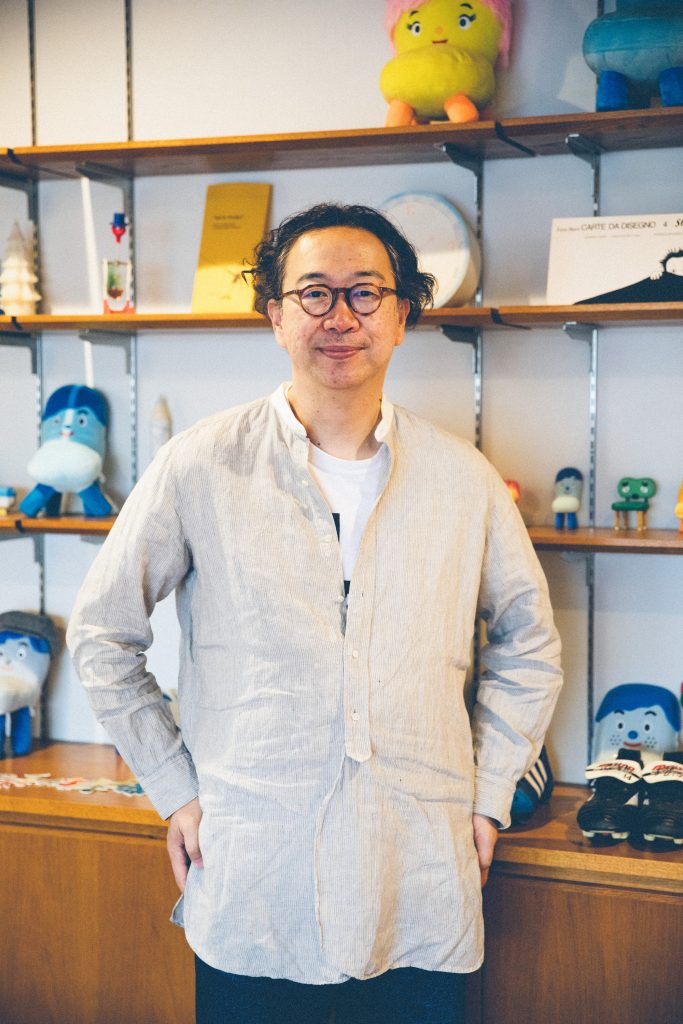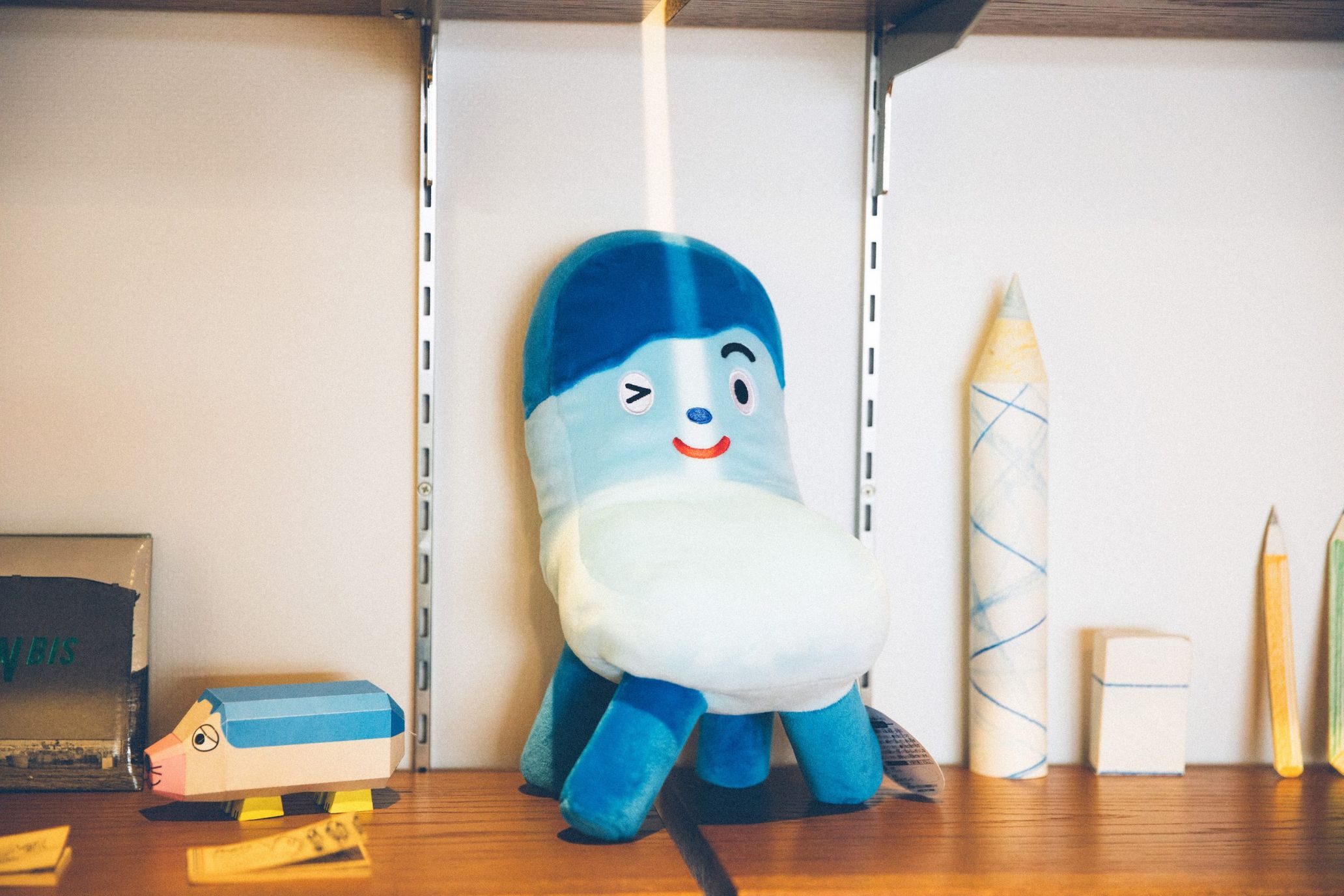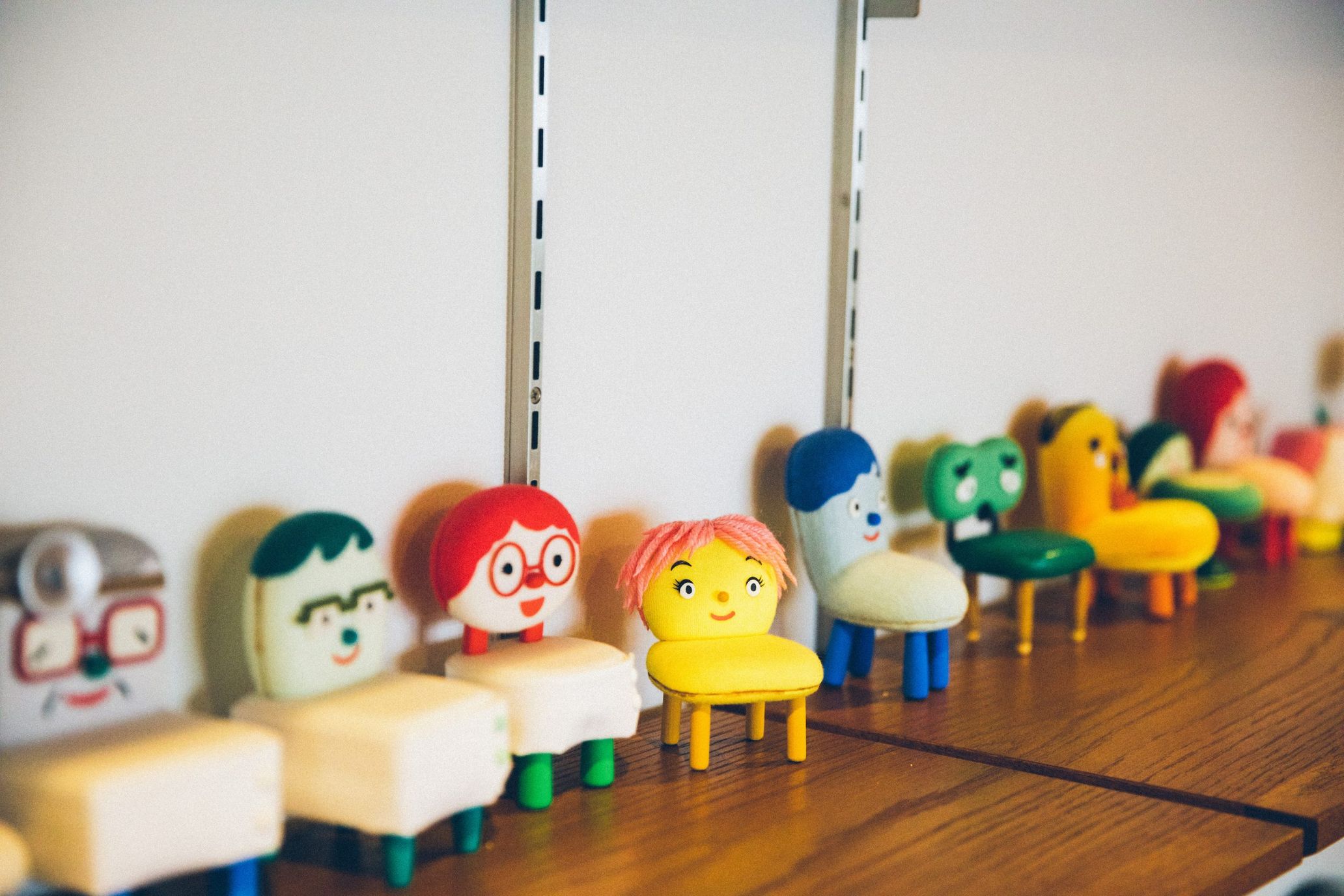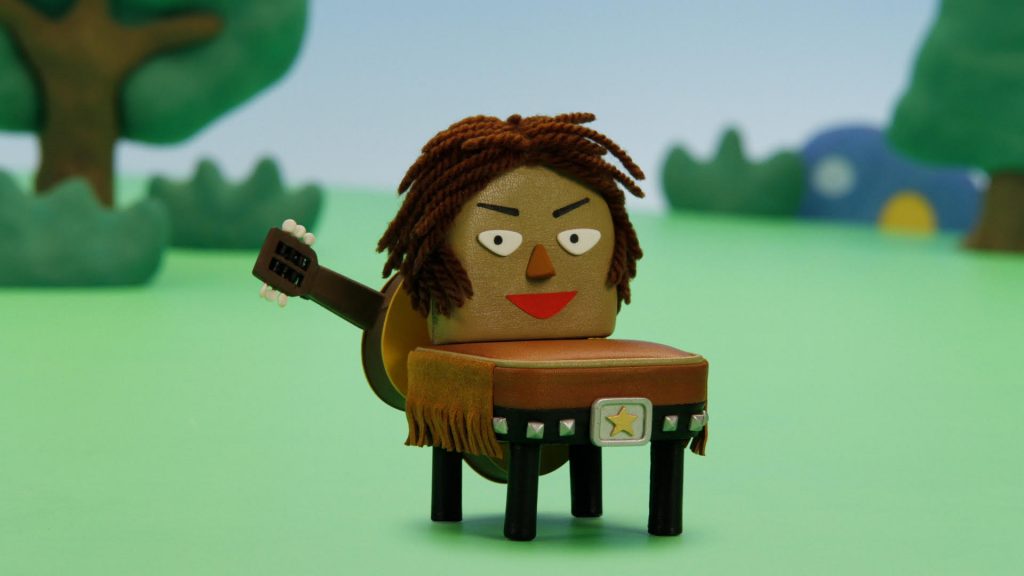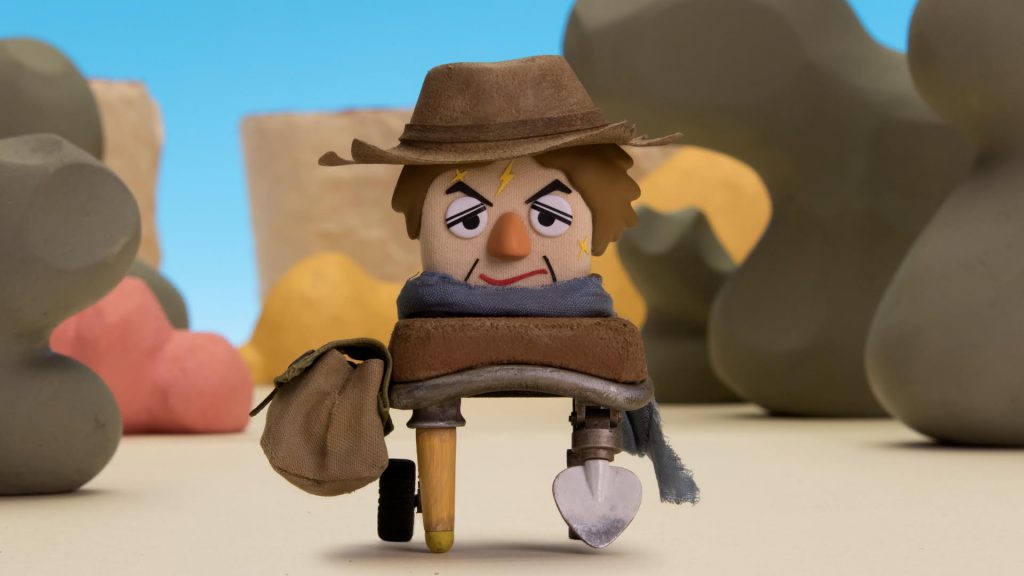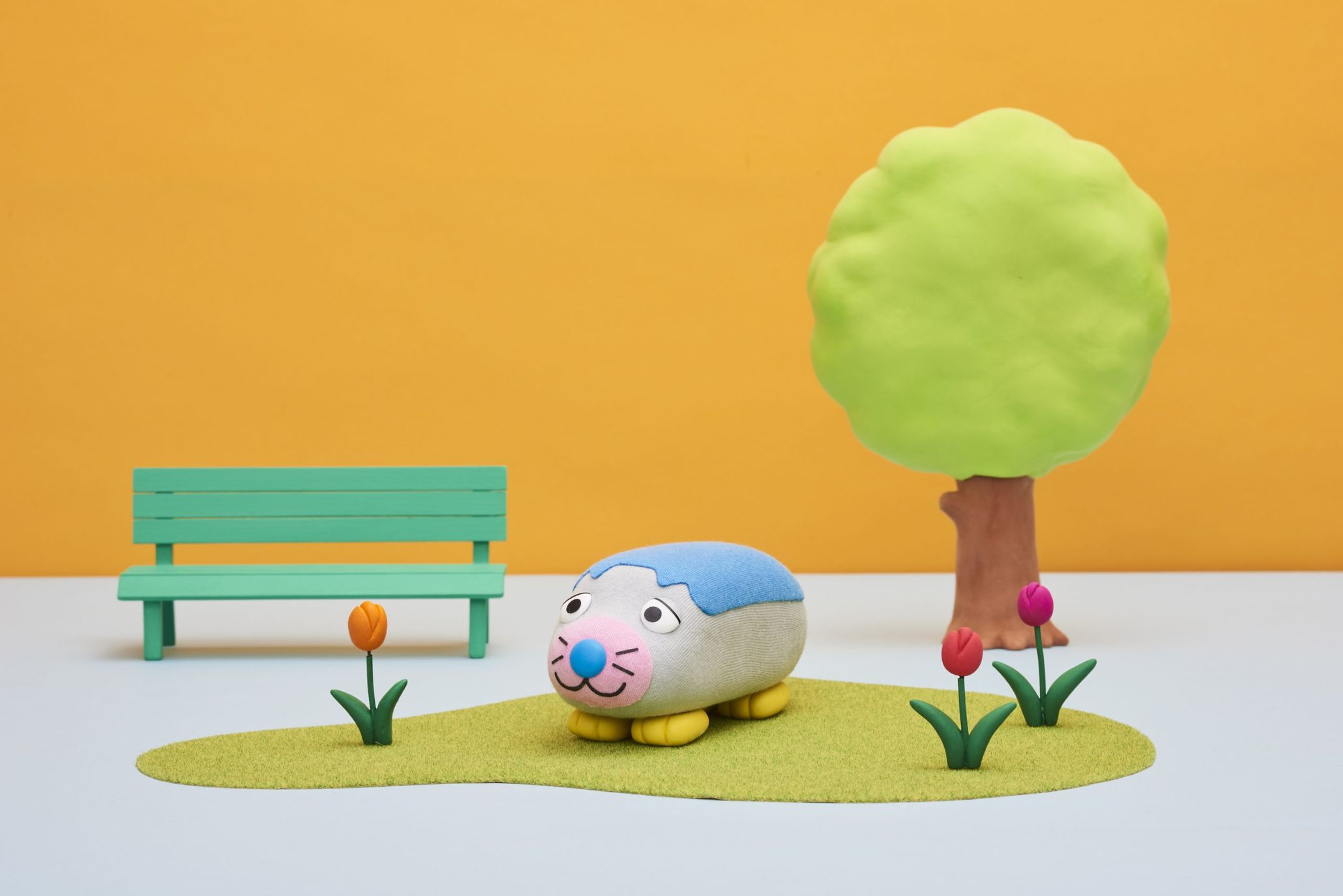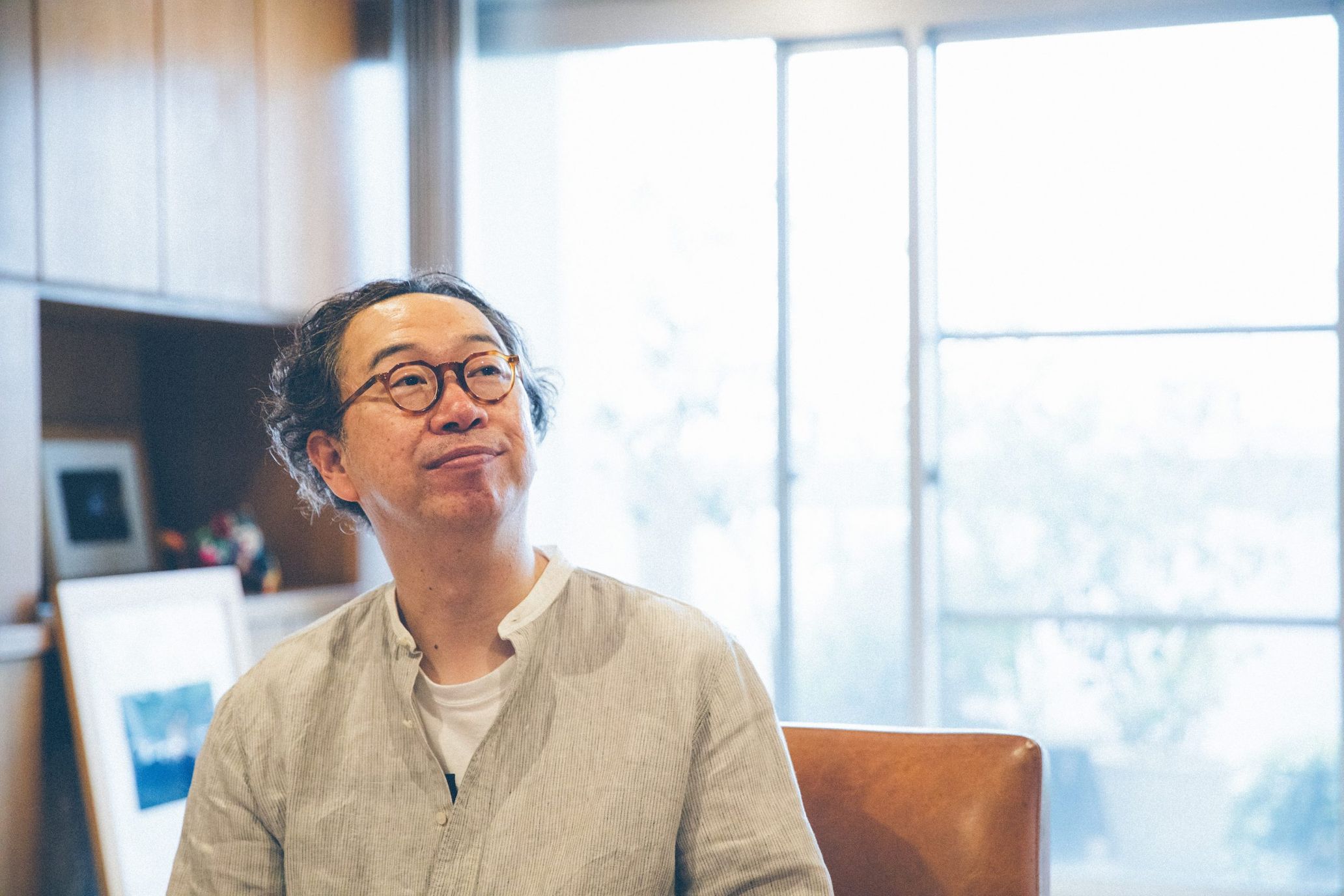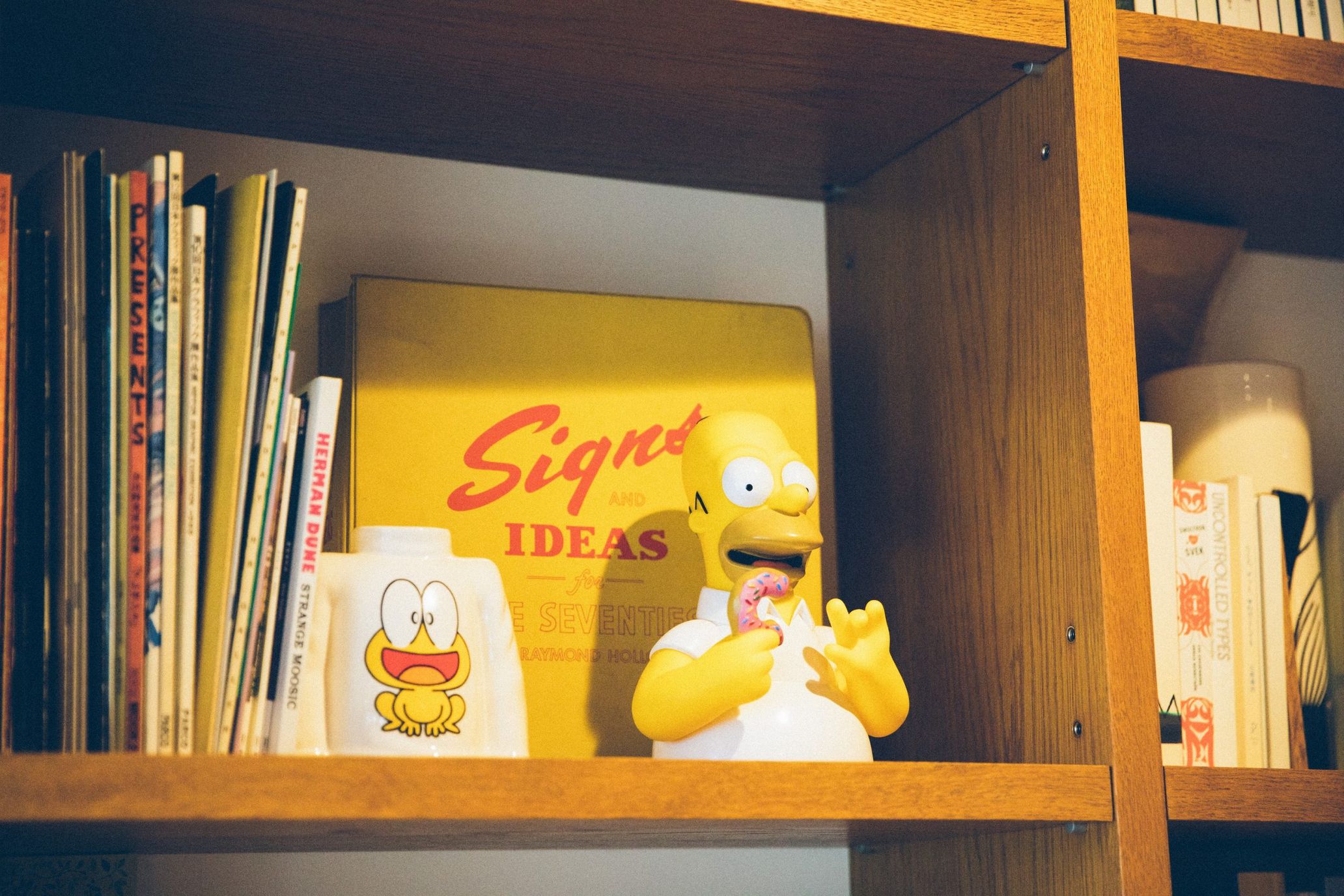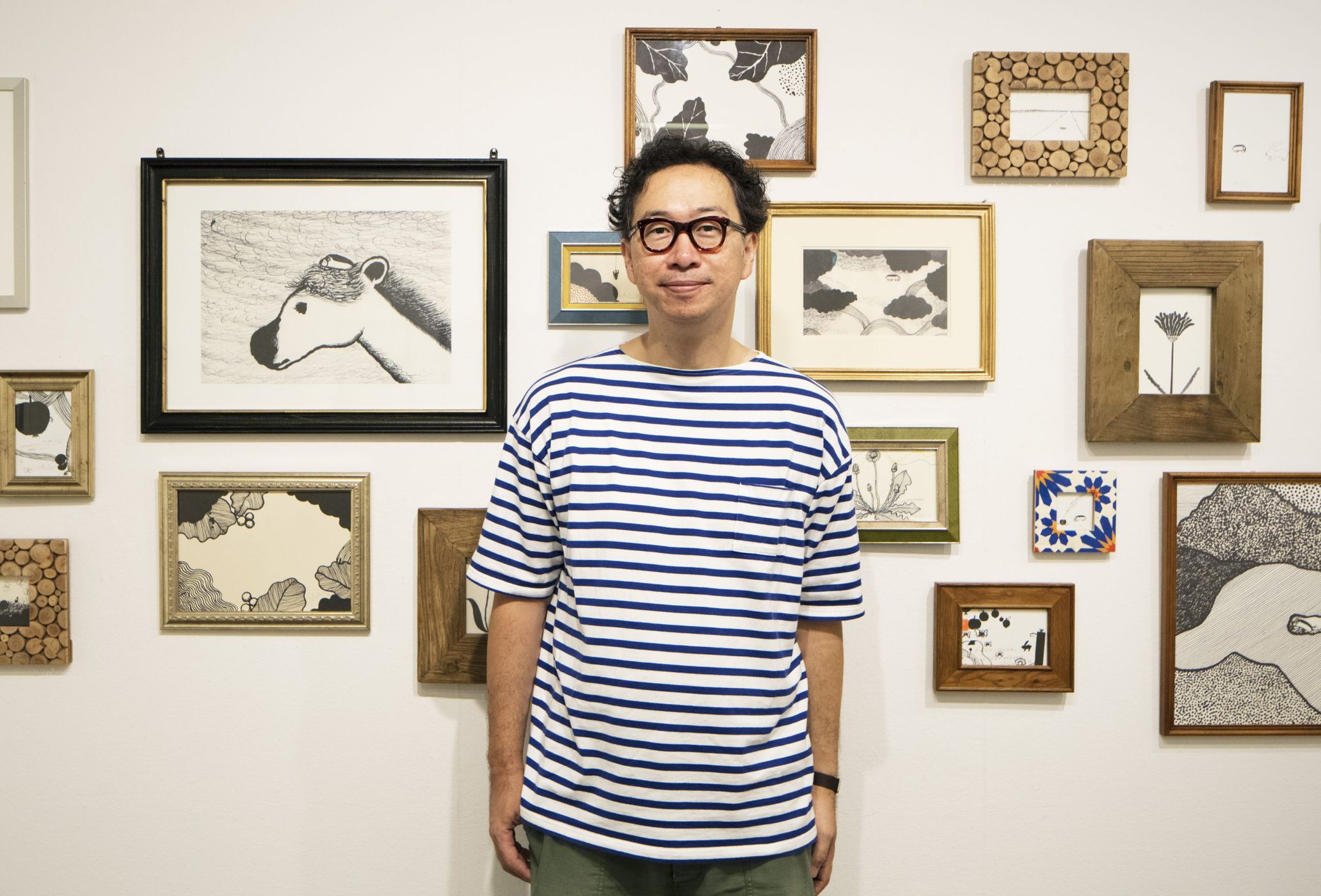Anime, manga, and games have become an essential part of Japanese culture.Mario, Hello Kitty, Doraemon, etc. are characters from Japan that are loved by people all over the world.Japan’s character culture is more developed than any other country in the world, with local mascot competing in rankings, and people enjoying conversations with their favorite LINE stamps as a communication tool.
Some of them are based on comic books, others on corporate initiatives, etc. Characters have become a part of Japanese people’s life. Among them, it is the characters from educational programs that have captured the hearts of children. Ichio Otsuka is active in a wide range of genres as an illustrator, including books and advertisements, and as an art director, he has created character designs and sets for the educational program “Miitsuketa!”(NHK Educational TV), and as an art director, he has created his own unique worldview through total design of characters, sets, and costumes.In the past few years, he has continued to make interesting projects such as creating original radio characters, and we asked him to talk about his creations and his attitude toward his work.
Inspired by a chair He saw at a bus stop when he was a child riding the bus with his mother.
–What was the first character you designed?
Ichio Otsuka: The first character I designed was Kossy, the main character of “Miitsuketa!”(NHK Educational TV) . However, I started my career as an illustrator, so I’ve always received requests for illustrations, such as “I’d like to use this as a character” in advertisements, products, and commercial facilities.
–Please tell us where you got the idea to make the chair a character.
Ichio: I was a part of the “Miitsuketa!” I had been involved with the program since it was being planned, but it was finally time for a discussion on what to do with the characters. Since it was a new program, we decided to use something that had not been used as a character in the world.Someone said, “How about a chair? But there was a feeling in the room that there was no such thing.
But when I was a little boy, my mother and I used to take the bus to go shopping, and I suddenly remembered the chairs at the bus stop that we saw from the bus. It reminded me of the rusty or battered chairs that someone had put there, and I thought it would be a good idea of chairs.At the time, I thought it would be a nice world if the children watching the program could feel the same way as I did when I watched it from the car window and thought, “That chair is working hard even on a rainy day.
――A world is created by the coexistence of many different chair characters.
Ichio: From the early stage of the production of the program, I wanted to create a story like a town where the chairs live, if possible. As the MC of the program, I thought that if the children could see the episodes and background of the characters, they would become more familiar with the characters and expand their imagination.In the course of living in the “Isunomachi (city of chairs”, there are sometimes new encounters, and with each encounter, various characters appear and multiply.
――Do you have your own ideas for the character settings?
Ichio: Each time, the production staff who create the story of “Isunomachi (city of chairs” come up with ideas of what kind of characters would be interesting and what kind of characters are needed for the story, and new characters are created, and the world keeps spreading.Based on these ideas and stories, I draw pictures and come up with the final design.
――Chairs have a strong element of paranoia in interior design, and I assumed that you were also a chair maniac, which led to the creation of Kossy.
Ichio: I think the design of the chair itself is interesting and beautiful as a product, but I am not that much of a fanatic (laughs).Sometimes I would think about the aesthetics and ideas of the chair, but basically I would prioritize the character of the chair over its design.
For example, if the character is a dinosaur-like chaise longue, I would prioritize its presence and the impression it gives when it comes out. For example, if the character is a dinosaur-like couch, I would prioritize its presence and the impression it gives when it comes out. I would even tell the design image of the chair, hoping that the atmosphere of the long reclining chair has beautiful lines.
Ichio: I draw a sketch in pencil and hand it to the sculptor with detailed instructions written on it. I don’t want to give too many detailed instructions and have the sculptor just follow my image, so I try to leave a little room for the sculptor to be creative.
All of the characters in “Isunomachi” ” are handmade by the sculptors, so by adding a little nuance and texture, the characters become more flavorful than the initial image.
For example, there is a character called “Momiyan” who is a massage chair, and he is based on the image of a massage chair found in an old public bath. To create that unique atmosphere, I gave him an image of the fabric to be used and had it processed. I asked them to use a cheaper leather material.
With CG and animation, you can express yourself freely to a certain extent, but with stop-motion animation, you need to have real objects made, so the work of the sculptor and production staff is important in that field.
――In the time-lapse animation of “Isu no Machi no Kossy(Kossy in city of chairs)” they actually move the puppets little by little, right?
Ichio: Yes. The facial expressions are also created for each scene, so I draw a few sketches of the expressions. However, I have to discuss with the director and staff of the movie who will be moving the characters to adjust the facial expressions.
――Are there any characters that you had a challenge in creating?
Ichio: There are times when people who are active in various fields make guest appearances as chair characters. Of course, I don’t necessarily want to look like them, but I feel like I want to resemble them.With a limited range of elements, I try to bring the atmosphere a little closer to the character’s face and hairstyle. At the time of the start of the show, when we were creating the character “Tortoise-Isu(chair),” who was voiced by Tortoise Matsumoto, he had a shaved head.However, I had a strong image of Mr. Matsumoto with long hair and a soulful hairstyle, so I tried to keep to the image I had originally had.I was relieved when he went back to a slightly longer hairstyle after that.
Also, I’ve been a big fan of Kai Band since I was in junior high school. When Mr. Kai agreed to join the show, the character “Mr.Scoop ” was born. At that time, I still wanted to keep the Kai-san style in the character, so I worked on the atmosphere of the face. It’s difficult to find the right balance between the character’s cuteness and his own atmosphere. I’d be happy if the parents and older generations who watch it with their children would react with “Whoa! What’s this program?”.
Ichio: In the pilot version before the show started airing regularly, there was no “Sabo-san” yet, just Kossyand Sui-chan at first. Later, when the show started broadcasting regularly, we decided that another character was needed to expand the story. We were talking about what kind of character would fit in a space with chairs, and we came up with the idea of a houseplant or cactus.
We discussed ideas such as, “How about a cheerful Latin character for a cactus? We came up with some ideas. Then we asked, “Can you draw us a sketch of your image by next week? That’s how we started the design process. Normally I would have needed more time, but back then, when the program “Miitsuketa!” At that time, I was working on various tasks at the same time, and I was concentrating on each task more than I ever have in my life. Maybe that’s the reason why it came out so smoothly.
――Who is choosing the character names?
Ichio: Basically, the scriptwriters and other staff members decide. In the case of Kossy, it’s a chair, so I think they were talking about “Koshi-Kakeru(sitting down)” and “Kossy”.
――It’s pretty casual (laugh).By the way, is this the first time that you supervised the total design of the show?
Ichio: This program was my first, and it has been running for more than 10 years now. Ideally, the program I watched as a child will eventually become a part of my parents’ generation, and they will be able to tell their own children that they used to watch the same program. I’m looking forward to the prospect of that happening in a few more years.
He has created a character to commemorate the 65th anniversary of Nippon Broadcasting System.
――Lately, you have been working on characters for radio stations besides TV.
Ichio: In 2019, I have created a character to commemorate the 65th anniversary of Nippon Broadcasting System. They are three mysterious creatures called “Ra-san,” “Gee-chan,” and “O-chan,” who hide behind the radio waves. I’ve always been a radio listener myself, including very popular program “All Night Nippon”, so I was very happy when I got the offer.
When I listen to the radio, I suddenly think, “What? Do you think they are talking about me? Or the song you want to listen to will come on at the right time. That’s because I imagined that these characters are actually making miracles happen on the airwaves. Radio has no visuals, so listeners can let their imaginations run wild. It is my hope that these characters will have a purpose in their lives.
――Speaking of characters, the mole “Welmo” is also adorable.
Ichio: This is the character that greets you at Joetsu Myoko Station on the Hokuriku Shinkansen(bullet train) . Once the Hokuriku Shinkansen bound for Kanazawa passes Nagano station, the Joetsu direction is mostly in tunnels. I thought a mole would be a good animal to represent this tunnel.
A mole was digging through the soil when he heard a loud noise.
When he came to the surface, he saw a bullet train running faster than him. It looks a little bit like him, so the mole starts to get interested, like, “What if it’s a rival? So the mole starts to get interested.
I created the character “Welmo” based on the story of a mole that had been living underground until then, but when the bullet train station was built, it went above ground and encountered various scenes and people. So his coloring is also a little bit Hokuriku Shinkansen inspired.
――We can also meet “Welmo” at “DIGMOG COFFEE” in Joetsu City. I would also like to hear about the time when you came to Tokyo to become a professional illustrator.
Ichio:My father was a carpenter, and we had all kinds of wood and other materials at home, so I started making things from scraps of wood when I was little. I’ve also loved to draw since I can remember, but I thought it would be difficult to find a job as a painter, so I became interested in design work.
At the time, I was fascinated by the excitement of being a student at a specialized school, and I had a vague idea of getting a job in Tokyo, working for about 10 years, and then starting my very own business.
I started job-hunting and immediately accepted a job offer, and things went very smoothly, but I suddenly felt that I wanted to do more drawing and painting, so I turned down the offer within a week. My parents were also upset by my decision (laughs).
I explained to my parents that I was going to work as a freelance illustrator, and until I was about 25 years old, I worked part-time at a supermarket making signs and taught myself how to draw. Thinking back on it now, I’m not sure how I was able to survive, as I was struggling to pay the rent. I never thought, “Will I really be able to make it?” just thought, “I can definitely do this. I must have been obsessed with something because I thought I had to do it now” (lol).
――You were motivated by an unfounded confidence (laughs).
Ichio:I’m sure that when you reach an age where you have some idea of how society works, you become more to the point. Even if you draw pictures, you might feel a little chill because it’s your job.I thought I wouldn’t like that for some reason. I love drawing, and I want to make a career out of it. So I always thought it would be good if my first instinct to make something interesting became my job.
――Was there an illustrator you aspired to be like at that time?
Ichio:Noriyuki Tanaka, who is currently working as an art director. Since then, I’ve been very fond of your way of thinking and the things you create, and I often visited your studio to have a look at your drawings. Later on, he even invited me to present a plan for a UNIQLO CM. I was happy when we were able to work together on the book.
Back then, I went to see many people, hoping to have them look at my pictures and talk to me directly. It was a great experience to have someone who was already successful actually look at my work and give me specific advice.
――What is the balance between your illustration and graphic design work now?
Ichio: In my case, it really started with drawing, and my first job was 100% as an illustrator. Someone would request an illustration and I would draw it. It was simple and fun, but at the same time it slowly started to expand into fields of work that could not be covered by that way of working.
Since I started working with the design staff, I’ve been taking charge of art direction, and if necessary, I draw illustrations myself.
As an art director, I’m also increasingly working on plans and world views, and creating them as a team with external people. For me, coming up with a plan or creating a world view is just like drawing an illustration on a piece of white paper, in the sense that I am creating an image from nothing.
Art direction and illustration work is now about 50/50.
――Personally, I’d be happy to see a new work collection book like “MAGIC!”,
Ichio:”MAGIC!” was released before the East Japan Earthquake, so it’s a collection of your works from over 10 years ago. I’ve been thinking about a book of my works for a while now. I’ve done a lot of work and created a lot of new things in the past 10 years, and I think it’s about time I put them all back together again.
The book had very few words in it, probably because at the time I was trying to pack all the essence of my work into one book. Now I’m a little more relaxed, and I think I could write essays about the process of creating the work and my thoughts.
――In addition to art books, your bookshelves are lined with a variety of books including music, movies, and photography books.
Ichio: The person who influenced me, or rather the person whose work I liked and looked at a lot, was David Hockney. Even though his works were drawn roughly or very well, they were as smooth as the dry air of California. I thought that kind of atmosphere was really good.I was also influenced by the psychedelic atmosphere of Peter Max’s Pushpin Studio.
――Could you tell us about your personal favorite characters?
Ichio:When I was a kid, I was a TV kid, so I liked “Kamen Rider” and “Doraemon”. As I grew up, I loved “The Simpsons” for its character designs and feel, I still buy T-shirts and other goods as I find them.
I like the show for its moderate venom and silliness, as well as for its seasonally conscious guests. Morrissey got mad when he was used as a character without permission (laughs).
――Benedict Cumberbatch did the voice-over, and he also wrote the music, which was great (laughs). Lastly, the environment has changed drastically in the past few years. How would you like to be involved in design in the future?
Ichio: Recently, due to the influence of COVID-19, I’ve had far fewer opportunities to meet people. That’s why I really want to have contact with people. For example, I’d like to work on designs for stores and products that I’m familiar with, but I’d also like to work locally, where I can be sure that someone will be happy when they pick up or see my work.It doesn’t matter if it’s 3D or 2D, even if it’s something small, it will become a standard and be loved by people. I would like to create many such items.
Ichio Otsuka
Born in Joetsu City, Niigata Prefecture in 1968. As an illustrator, he has worked on many advertisements, packages, and publications, and as an art director, he has been involved in the design of character designs, costumes, sets, and title logos for advertisements and TV programs. His works include NHK Educational TV “Miitsuketa! and others.
As a Family Art Director of Kawasaki Frontale in the J-League, he is in charge of designing merchandise and event-related designs, and designed the uniforms for the 2015 season. In 2018, he was in charge of the illustrations for the opening video of NHK’s serial television series “Hanbun, Aoi(Half Blue)”. Also been involved in many workshops for children.
His creative activities that transcend genres are supported by a wide range of people, from children to adults, and his diverse creations, from illustrations to designs, spaces, characters, costumes, and uniforms, are one and only in the industry.He has won the Tokyo ADC Award, Cannes Lions, D&AD awards, and many other international awards. Specially appointed professor at Tokyo Zokei University.
http://ichiootsuka.com
Photography Kosuke Matsuki

